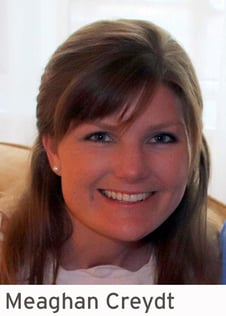Imagine a world where all your new hires received end-user training that best matches their new role at your organization. Think about the difference it would make to have new providers and clinical staff, well-equipped with system knowledge, onboarded and ready to treat patients. Also consider the impact to registration times if users are trained in an environment similar to their everyday workflows. Since A/R days tend to lag when new billers are onboarded, what if the lag could be reduced by better equipping billing-users in the EHR?
These are just a few of the benefits of a robust new-hire training program.
Long-term success in training is partially dependent on a training environment that matches production. Your training team dreams about leading a classroom of physicians in an actual classroom environment (ACE) without having to make a single excuse. Instead of quieting the grumbles by filling the room with statements such as, “Don’t worry, production doesn’t look like this” and “This is just training, so it will be better, I promise,” the team could be showing the most realistic training possible.
It might sound too good to be true, but it can be done.
When first implementing Epic, we on the training team are faced with the challenging task of creating the Master Training Environment (MST). We are supposed to provide a realistic training environment, mirroring what will be in production. But often, production isn’t even close to complete when we're putting together MST. Somehow, we must take whatever build we can get to create patients, users, departments, and curriculum, developing a training experience months before production will go live. And with the help of Training Wheels, MST build tools, a little training environment magic, and a lot of hard work, we do it. We build a functional, realistic MST.
With every refresh of the ACEs we have clean patients to incorporate every day. We have appointments scheduled with our providers every morning. We have work queues to be worked for every class we hold. It’s a proud moment for those of us on the inside, knowing the blood, sweat, and tears (or more appropriately, the mitosis fails, user duplicators and anchor dates) that contributed to the final product.
Time passes, and we keep training. New hires are brought into the organization, the new car smell starts to wear off, and MST gets its first dings and dents. We start to make excuses. Before we know it, our classes that were lesson-planned and built to perfection are filling with small workarounds.
With ever-changing build and frequent upgrades, maintaining an impressive MST is more daunting than ever before. So how do you keep your training environments relevant? Start by changing your MST strategy. Rather than preparing for a complete MST rebuild every 18 months or so, we recommend doing constant maintenance and smaller build. Here are three ways to effectively maintain your MST.
1. Keep the lines of communication open
 The communication between environments and team members must be continual. During the initial build, the training team becomes best friends with the build team, constantly exchanging questions, learning about new navigators and department updates. Don’t let this communication fizzle away over time. Ensure your training team and analysts continue to meet regularly and review change control requests. Educate the analysts about the importance of sending an FYI to the training team. Often, the “minor” changes that are moved to MST have major impacts in the classroom, which become nearly catastrophic when they appear by surprise.
The communication between environments and team members must be continual. During the initial build, the training team becomes best friends with the build team, constantly exchanging questions, learning about new navigators and department updates. Don’t let this communication fizzle away over time. Ensure your training team and analysts continue to meet regularly and review change control requests. Educate the analysts about the importance of sending an FYI to the training team. Often, the “minor” changes that are moved to MST have major impacts in the classroom, which become nearly catastrophic when they appear by surprise.
The lines of communication between environments must also stay wide open. There is no right time to cut off Data Courier with other environments. MST must always remain open to Data Courier and new build from the testing environment (TST). Yes, certain items and records are locked down, but the training team understands that and needs to be ready and willing to accept all other new build as it becomes available. Blocking the movement of build will put MST on the fast track to becoming outdated.
2. Learn to use Nova Notes
Nova Notes contain an impressive amount of information about updates and the possible implications on training. Instead of waiting for something to break in training, encourage the training team to take a more proactive approach and become comfortable reading Nova Notes.
They’ll benefit from learning how to filter notes based on application and impact on training. They’ll also learn how to follow the status of Nova Notes and determine how your organization will approach the update by reading the comments and monitoring the tags. Use these notes as an additional line of communication between the training team and the build team.
3. Make MST build a regular activity
 Gone are the infrequent (and big) upgrades. Smaller upgrades at a more rapid pace are here to stay, so we need to do the same with MST build. The first MST build is intimidating and time-consuming, but it doesn’t always need to be. Semiannual MST build weeks could be the answer for your organization. Setting aside the time as an entire training team allows people to prepare for the activity and support each other during the process.
Gone are the infrequent (and big) upgrades. Smaller upgrades at a more rapid pace are here to stay, so we need to do the same with MST build. The first MST build is intimidating and time-consuming, but it doesn’t always need to be. Semiannual MST build weeks could be the answer for your organization. Setting aside the time as an entire training team allows people to prepare for the activity and support each other during the process.
Instead of starting with a clean Cookbook and a fresh copy of TST, the training team will most likely be updating patient history, visit types, and user build. In preparation, encourage trainers to download the newest version of the Cookbook, look for changes to Training Wheels, and determine which changes are necessary, which changes are nice to worhave, and which should be kept in the no-no column. Has one team been lucky enough to sneak by the last six months without any MST breaks? The build week isn’t lost, and should be used to improve existing patients, update the work queue that hasn’t been behaving, or find the missing In Basket message.
Frequent upgrades are the way of the present (and future), and the training team needs to be prepared to handle the transition. Training doesn’t need three months to rebuild MST. We just need a few hours here, a few emails there, and a few weeks every year to maintain it to perfection.
If you have questions about incorporating these maintenance tasks into your MST build, or need additional guidance with your training program, let’s talk. We’ll listen to your challenges and help you develop a program that’s tailored to meet your organization’s and end users’ specific needs.
Meaghan joined Nordic in February 2016 and is a Senior Consultant on the Training Solutions team. She brings over seven years of Epic training experience, working as an instructional designer, classroom trainer, and MST builder. She has worked with numerous clinical applications throughout implementation and upgrade projects.
Sarah joined Nordic in July 2018 and is Manager on the Training Solutions team. As a former healthcare FTE, she brings operational and IT perspective with over 11 years of experience in the field as a training manager, instructional designer, classroom trainer, training assessor, MST mentor, and end user for both Enterprise and Community Connect projects.
